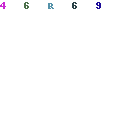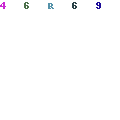Rambsy examines literary and cultural history in new book
What is the connection between the Harlem Renaissance and the Hip-Hop movement of the 80’s and 90’s? According to Howard Rambsy, associate professor of English Language and literature in SIUE’s College of Arts and Sciences (CAS), it is the Black Arts Movement of the 1960’s and ’70’s.
In a recently published book entitled “The Black Arts Enterprise and the Production of African American Poetry,” Rambsy explores the history of the literary and cultural movement. The book was recently listed in the Chronicle of Higher Education’s book list. Rambsy stated that his interest in the era stems from a general lack of scholarship on the Black Arts Movement. The book focuses on the major magazines of the era, in particular the Black World Magazine, according to Rambsy.
“Between 1965 and the mid-’70’s when the movement occurred, there were somewhere near 100 anthologies featuring African American poetry. So that was a major gauge of African American poetry, of the visibility they hadn’t had before, and I was very interested in that,” said Rambsy. “I also was focusing, particularly, on how they developed all these different publishing means and how they maximized these publishing venues.”
The Black Arts Movement was influenced by any number of events between the 1930’s and 1950’s, but, according to Rambsy, the Harlem Renaissance was the major event that many academics focus on as the primary motivator for many of the artists. Rambsy stated that a major portion of the Black Arts Movement centered on the self-determination of the artists who were not being published in mainstream publications, although not all of the artists had publishing as a central reason.
“In the forward, I say that the Black Arts Movement is the Harlem Renaissance 2.0, so it kind of extends it,” said Rambsy. “They were very much oriented with how do we assist the community through poetry and plays and short stories and critical writings. There was a very communal oriented approach to the movement.”
Amiri Baraka, Sonia Sanchez, Nikki Giovanni, Larry Neal, Maya Angelou, and Carolyn Rodgers are a few artists that Rambsy focuses on in his examination of the artists. Rambsy also stated that Eugene Redmond, a emeritus professor of English language and literature who wrote “Drum Voices,” is an example of the critical writings of some Black Arts Movement artists. Rambsy stated that many of the artists garnered attention to their work by tackling the art from a militant approach and that they looked to two key figures in the African American community as guides in their approaches.
“They focus on Malcolm X and John Coltrane as the two figures who inspired their works. Malcolm represented the political side and then Coltrane represented this idea of music. So, of the various folks they wrote tribute poems to, those two were the ones who appear most frequently. I thought they kind of epitomized this interest in politics and music,” said Rambsy. “[In the book] I talk about what were the main trends. So, they were publishing these anthologies and magazines and what were some of the major things [the artists] focused on.”
The Black Arts Movement tended to follow a different path from that of Martin Luther King, according to Rambsy. He concludes that the Black Arts Movement logically differed from the movement in the south because of divergence in the regional cultural differences in the south and the north-east and mid-west.
“Martin Luther King was in the south. Many of these poets associated with [the Black Arts Movement]–not all, but a large number of them–got it started in the northeast and upper mid-west, like Chicago. So, I always thought they were more inclined with Malcolm X because he was living first in the mid-west then he moves to the northeast. I think they were more inclined in city spaces–it’s funny that my students and I were just talking about this–how in city spaces, you kind of have a different world view” said Rambsy. “So, Malcolm’s world view fit much more in line with them, not only what he was saying, but how he was saying it.”
Rambsy stated that many of the artists took from Malcolm X’s ideology and delivery style and wrote sharper, quicker poems. The cultural differences is another reason that he believes the Black Arts Movement followed Malcolm X. Rambsy stated that because of the slower speech patterns of the deep south and the ‘monumental style’ speeches that King gave was less attractive to the artists of the movement.
“While I don’t take anything away from Martin Luther King, it’s notable that [the artists] didn’t base their work on King, with the idea of ‘turn the other cheek’ is not it. They felt like it was much more important to say ‘Let’s expose when we think things are anti-black and racist. We need to really highlight that.’ They were also very adamant about using their own black publishing venues. It still is considered militant now. Those were the kinds of things that gave them a militant edge: one self-determination and two ‘let’s publish our works in our own and by our own,’” said Rambsy. “They produced a really hard edged, militant–but also music inflected–poetry. So they gained a lot of attention for their work.”
While the Black Arts Movement stemmed from the Harlem Renaissance, the hip-hop movement of the 1980’s and ’90’s naturally followed the Black Arts Movement. Rambsy stated that while many hip-hop and rap artists were neither old enough nor, in some cases, born yet while the Black Arts Movement was in swing, many of them were influenced by their parents choices in music and art.
“The Black Arts Movement, the main years were–and it’s debatable–’65 into about ’76. But I say these key years were from ’68 to ‘73. Many of the leading rappers are born [in this period]. Jay-Z was born in 1969. I have this list of rappers who were born between–like Tariq ‘Black Thought’ Trotter of The Roots, and, people might not consider him a big-time rapper, but Will Smith,” said Rambsy. “Now, they were too young then, but what this meant is their parents were hearing Black Arts poetry. And they were also aware of the music which Black Arts folks were into. So, you’ll hear these guys–Jay-Z, P. Diddy–when they are talking, they’ll say ‘I was very much influenced by my parents music.’”
This book will not be the last on the topic for Rambsy. According to him, he plans on focuses several more publications on the topic.
“My main thing that I am trying to do is just write African American literary history, which is also American literary history. That’s the void I fill with this, and I hope I fill with every other book I will write. It’s about just talking about African American literary history, how it fits, how it helps things progress, or even shift focuses and shift where we look,” said Rambsy. “More so than a classroom, I hope libraries will get it and students who are interested in American and African American literary history, particularly during the ’60’s and 70’s or figuring out how we get to where we were in the ’80’s and ’90’s.”
Filed Under: Black Studies • English Language & Lit • General CAS Stories














